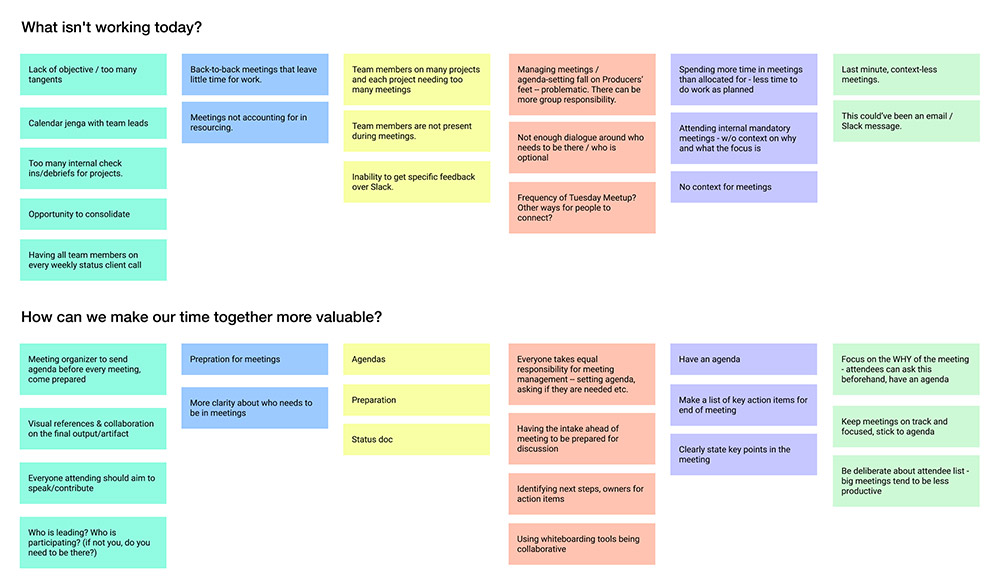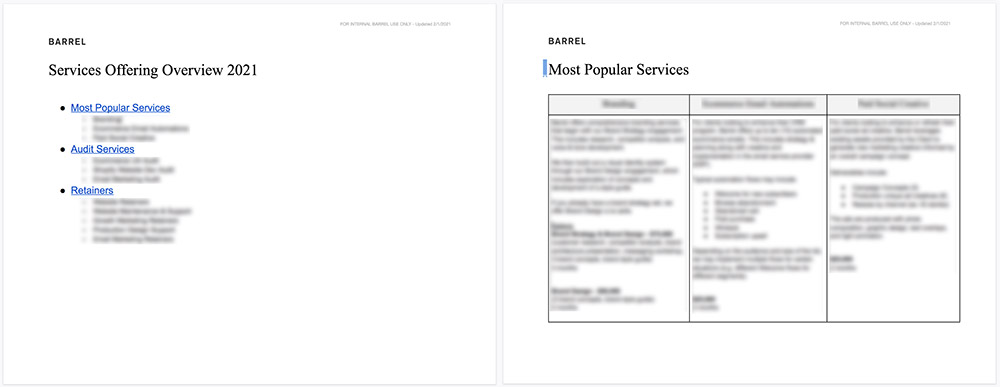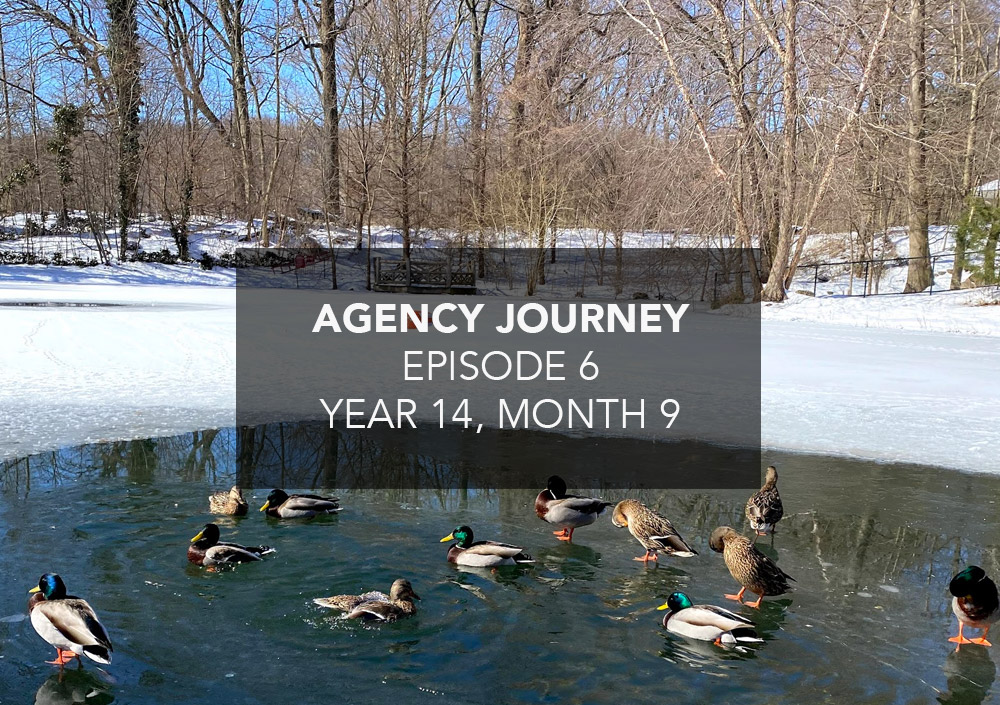My brain’s been on fire the past couple of months as I’ve been processing and applying concepts from a few books that have resonated deeply with me. They are: The Courage to Be Disliked by Ochiro Kishimi and Fumitake Koga, The Three Laws of Performance by Steve Zaffron and Dave Logan, and An Everyone Culture: Becoming a Deliberately Developmental Organization by Robert Kegan and Lisa Laskow Lahey.
A common theme that runs through these books is the commitment to face reality as it is, to not dwell on past failures, and to take command of future possibilities. While two of these books are written with business organizations in mind, all three are also about personal growth, self-acceptance, and belief that we can change through new behaviors.
I’ve felt energized by the ideas from these books and they’ve provided useful prompts for deeper self-reflection and explorations with future-based language. You’ll note some of the influences in the writing below.
About Agency Journey: This is a monthly series detailing the happenings of my agency Barrel, founded in 2006. You can find previous episodes here.
Highlights
Making Meetings Effective
Barrel partner Lucas Ballasy ran a team-wide workshop on “creating more space for creativity” which centered on how we could, as a team, make meetings more effective. The workshop began with a calendar exercise where people were asked to open their calendars and ask themselves “if I could only attend five meetings this week, which would I attend and how would I make progress on the others I couldn’t?” The team then split into breakout rooms to discuss the exercise by answering these questions:
- How did your perception of your week change after this exercise?
- What isn’t working today?
- What will our future look like if we don’t make a change?
- How can we make our time together more valuable?
We then reconvened as a larger group and each breakout group shared their thoughts. A few themes began to emerge as people took turns speaking:
- Agendas are critical for every meeting, preferably sent prior to the meeting
- Be deliberate with who is attending and whether or not it’s absolutely necessary for people to be there
- Ensure the meeting ends with clear next steps

A screenshot of some of the points shared by the different breakout groups in our workshop about meetings.
Much credit to Lucas for facilitating this workshop format (you can check out more of his thoughts on meetings on his blog). As a leadership team, we’ve usually relied on top-down reiteration of policies and best practices in slide deck format with occasional “open floor” discussions. With this approach, it was a deliberately bottoms-up approach for the team to identify issues and generate their own language. Whether or not this leads to impactful change is still to be determined, but I much prefer seeing people engage more actively like this. One thing we’ll have to remember to continue framing is that these workshops won’t necessarily have concrete actionable steps that our top-down meetings typically had but instead should be seen as catalysts for each team member to shift their own individual behavior based on the learnings.
Sei-Wook Becomes a Dad
On Feb. 13th, Sei-Wook and his wife Michelle gave birth to their son Henry.
In a blink of an eye, 21-year-old Sei-Wook, who co-founded Barrel with me 15 years ago with my 23-year-old self are now both a couple of dads on the backside of our thirties. When we started Barrel, we were plenty satisfied with making just enough to pay ourselves so we could make rent and not go hungry. The idea of supporting a full team let alone our own respective families was so remote and unfathomable. And yet, little by little, we’ve built something that not only sustains our families but the families of our employees and our extended network of contractors. Along the way, we grew from naive kids who nerded out on making websites to adults who appreciate the responsibility of running a business and being entrusted with the careers of others. Time flies.
I’m super happy for Sei-Wook. He’ll be fantastic dad as he’s been a wonderful co-founder, friend, husband, son, and general human being in all the years I’ve known him.
Top of Mind
Tightening Up Our Services Offering
One of the takeaways from our Annual Planning meeting (see Episode 5) was to strengthen our strategic positioning by being deliberate about the types of activities we performed as a company. In the past month, I’ve been working with our Director of Business Development Dan Fleishaker to streamline and simplify our services offering. Part of the exercise has been to identify the most requested services and to ensure we could codify pricing and processes around them. The other part has been to discuss what services we would avoid even if they may have been revenue-generators in the past.
The strategic positioning work we did in January led us to hone in on what we’re calling the “direct-to-consumer (DTC) experience layer” and working with companies that are investing in scaling their DTC channel. This manifests in services that help companies enhance their interactions with customers, namely their websites, emails, and paid ads. We’ve codified these in a Services Offering Overview doc, which we finally shared with the team recently.

Not going to give away all our secret juice, but here’s a couple pages from our Services Offering Overview doc. One is the table of contents and the other shows 3 services outlined with a few details and pricing. Nothing complex and easily digestible for the entire team.
I’ve gone through similar efforts like this doc in the past, but it feels different this time around. Part of it is that the exercise is not a standalone attempt to clean things up but an extension of a deeper strategy. The other part is that rather than a top-down forced “rule change” by me, this is a rather collaborative effort that will see daily usage by our Business Development team. If things work out, here’s what I’m hoping will happen:
- 3-6 months out, the roster of active projects will reflect the simplicity of the Services Offering, meaning that our team will be engaged in projects that hit our sweet spot (stuff we’re good at and can do profitably)
- 6-9 months out, we’ll get a flywheel going where each service offering is backed by a wealth of examples to put prospects’ minds at ease and to demonstrate that we’ve done this before, increasing our likelihood to win
- 9+ months out, since the services lean heavily towards long-term retainers, it’s possible that our recurring revenue base will increase, which will help our team with resource management and financial planning
I have no doubt that we’ll need to make tweaks along the way, but I’m very certain that continuing to clearly define our services in a single document and keeping the entire team up-to-date on how we talk about services and value to our clients will be worthwhile activities.
Reimagining the Way We Work
I’ll share more details in the coming months because there’s been a lot of thinking and planning that’s gone into these decisions, but simply put, two big changes are happening at Barrel that’ll impact the way we work: resource management will be treated as its own discipline and we’re moving all our project & task management to Asana.
We’ve had our struggles with resourcing throughout the years, and the conclusion we’ve come to is that at our current size, we would be best served by centralizing the resourcing function at Barrel. Today, resourcing is mainly the responsibility of our producers, who’re also tasked with project management not to mention QA and content management on certain projects. In the worst of times, resourcing can often dominate a producer’s day and derail project schedules, forcing unpleasant hours spent on Smartsheet where we’ve combined resourcing and Gantt-style project scheduling in one unwieldy template.
By separating out the resource management function into the hands of a resource management team, we’re hoping to open more space for our producers to be effective project managers. We also believe a focused resourcing team will help us overcome some of the inaccuracies in the Smartsheet that hinder our decision-making process. There will be unanticipated challenges and different kinds of problems that pop up by making this move, but we’ve banged our heads long enough against the same issue using the same structure for too long that it’s time to try something else. We also believe the simplification of the services offering and some other changes to our business development practices will ease the burden on resourcing. More on this in future episodes.
With Asana, we’re eager to embrace a platform that will centralize task management across the entire agency. We believe that Asana, with clear views of project status and outstanding tasks, can provide us with opportunities to reduce things like status meetings and weekly checkins. We also think our project teams will benefit from having robust project templates (with recommended milestones and tasks) to guide processes and train those who aren’t familiar with how we do things. As with any new platform, there will be a learning curve and some messiness initially, but I think people will also appreciate moving to a platform with a smoother UI that’s easier on the eyes than a Smartsheet or even a Basecamp.
Will the tool singlehandedly make our lives easier and better? Of course not–there’s much work to do in being deliberate and methodical in how we use it and how we can get everyone to embrace the same best practices for consistency. And none of this really matters if we’re hampered by poorly scoped SOWs, difficulty with resourcing, or lack of polish and responsiveness in our communication with clients. But tools are tangible and easy to understand, so there’s power in using tools to shift the way we work and for people to feel and see the changes happening.
We’ve begun to start new projects on Asana and will be transitioning a number of existing ones soon. It’ll be another 3-4 months before we know how much of a game-changer this move has been, and in the meantime, I look forward to being an ardent cheerleader for the platform.
Shared with Partners
“Generative learning cannot be sustained in an organization if people’s thinking is dominated by short-term events. If we focus on events, the best we can ever do is predict an event before it happens so that we can react optimally. But we cannot learn to create.” (Peter M. Senge, The Fifth Discipline)
As I mentioned in the intro, I’ve been thinking a lot about generative future-based language. This quote captures the importance of looking ahead and focusing on the long-term rather than being bogged down with the things happening to us in the moment. It’s a reminder that for true learning and creativity to emerge, an organization has to be provided with the necessary space. This is why we invest so much time in our workshops, our discipline meetings, and our team-wide communications because while they may take away from billable hours, they provide space for the team to learn and generate a higher-potential future.
“When people’s futures are filled up with decisions from the past, managers tend to produce policies, procedures, rules, and systems designed to prevent the negatives that happened before—lawsuits, strikes, employees who steal, managers who abuse the privilege of their positions—from ever happening again.” (Steve Zaffron and Dave Logan, The Three Laws of Performance)
I’ve seen this behavior in action and have been an active participant as well. Being burned on a client project or having had a negative experience with an employee, it’s been easy to default to a defensive posture of creating protective policies and rules to ensure it “never happens again”. Over time, the layers of policies and restrictions slow down the business and create an unintended sense of unwieldy bureaucracy. Being aware of this dynamic and addressing what’s been unsaid (e.g. our fear of messing up, our unwillingness to trust, etc.) is the only way to break free of the past and chart a new future.
“The single most powerful force I have in my life is the words that I use to describe my situation. The reason? The label becomes the experience.” (Keith J. Cunningham, The Road Less Stupid)
Language, language, language. So much boils down to the words we choose. Not only in how we talk about things with others but also in how we internalize and perceive our own situations. I’ve been working on my own Immunity to Change map and it’s become clearer to me that certain assumptions I have about myself–the language I use to describe my own self-worth–have flowed into many of my everyday expressions, which in turn have shaped the way Barrel views itself and is viewed by others. It all starts with language, and in many ways, language that limits, holds back, and self-doubts will only reinforce the position in life.
